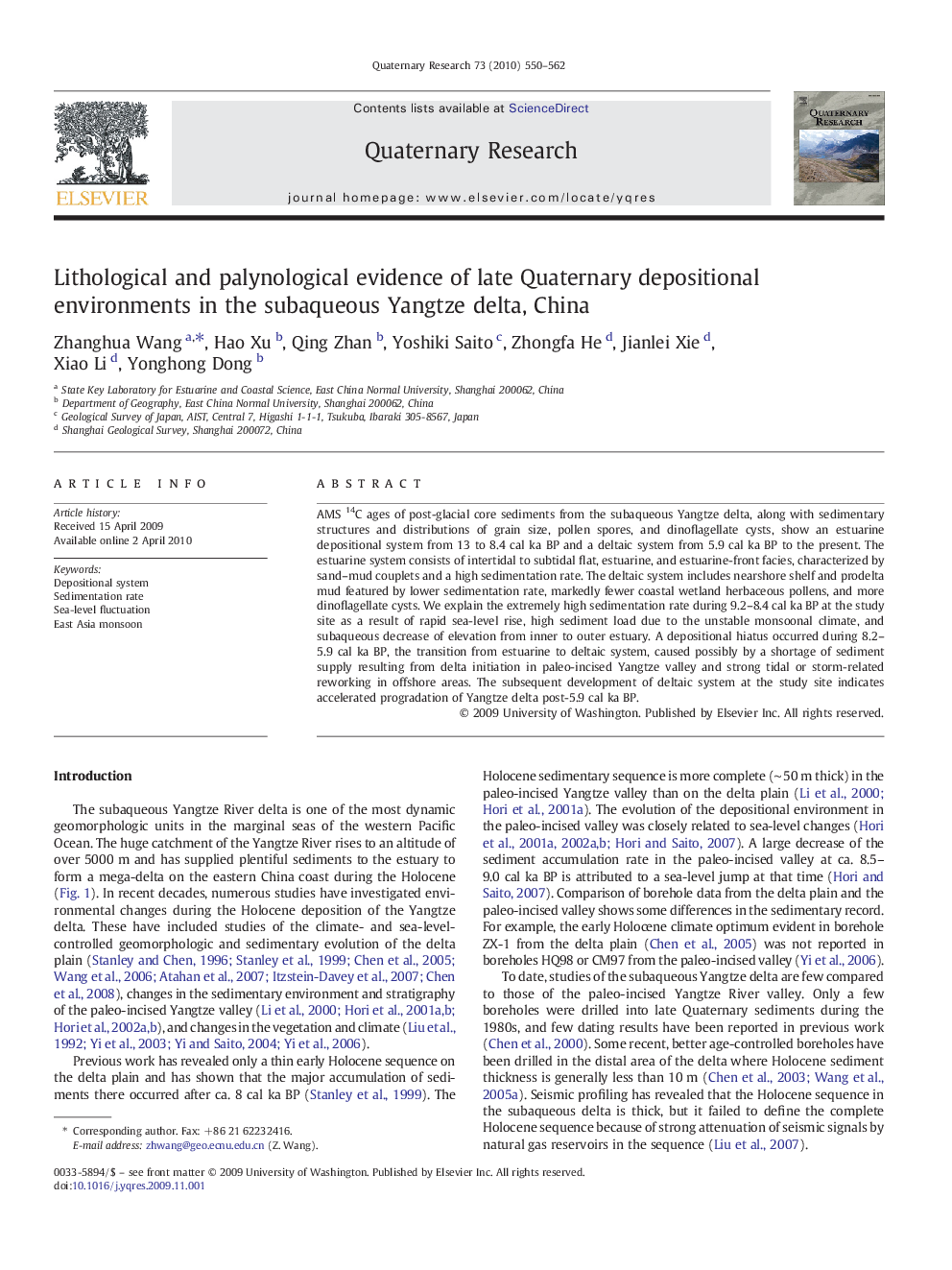| Article ID | Journal | Published Year | Pages | File Type |
|---|---|---|---|---|
| 1045930 | Quaternary Research | 2010 | 13 Pages |
AMS 14C ages of post-glacial core sediments from the subaqueous Yangtze delta, along with sedimentary structures and distributions of grain size, pollen spores, and dinoflagellate cysts, show an estuarine depositional system from 13 to 8.4 cal ka BP and a deltaic system from 5.9 cal ka BP to the present. The estuarine system consists of intertidal to subtidal flat, estuarine, and estuarine-front facies, characterized by sand–mud couplets and a high sedimentation rate. The deltaic system includes nearshore shelf and prodelta mud featured by lower sedimentation rate, markedly fewer coastal wetland herbaceous pollens, and more dinoflagellate cysts. We explain the extremely high sedimentation rate during 9.2–8.4 cal ka BP at the study site as a result of rapid sea-level rise, high sediment load due to the unstable monsoonal climate, and subaqueous decrease of elevation from inner to outer estuary. A depositional hiatus occurred during 8.2–5.9 cal ka BP, the transition from estuarine to deltaic system, caused possibly by a shortage of sediment supply resulting from delta initiation in paleo-incised Yangtze valley and strong tidal or storm-related reworking in offshore areas. The subsequent development of deltaic system at the study site indicates accelerated progradation of Yangtze delta post-5.9 cal ka BP.
